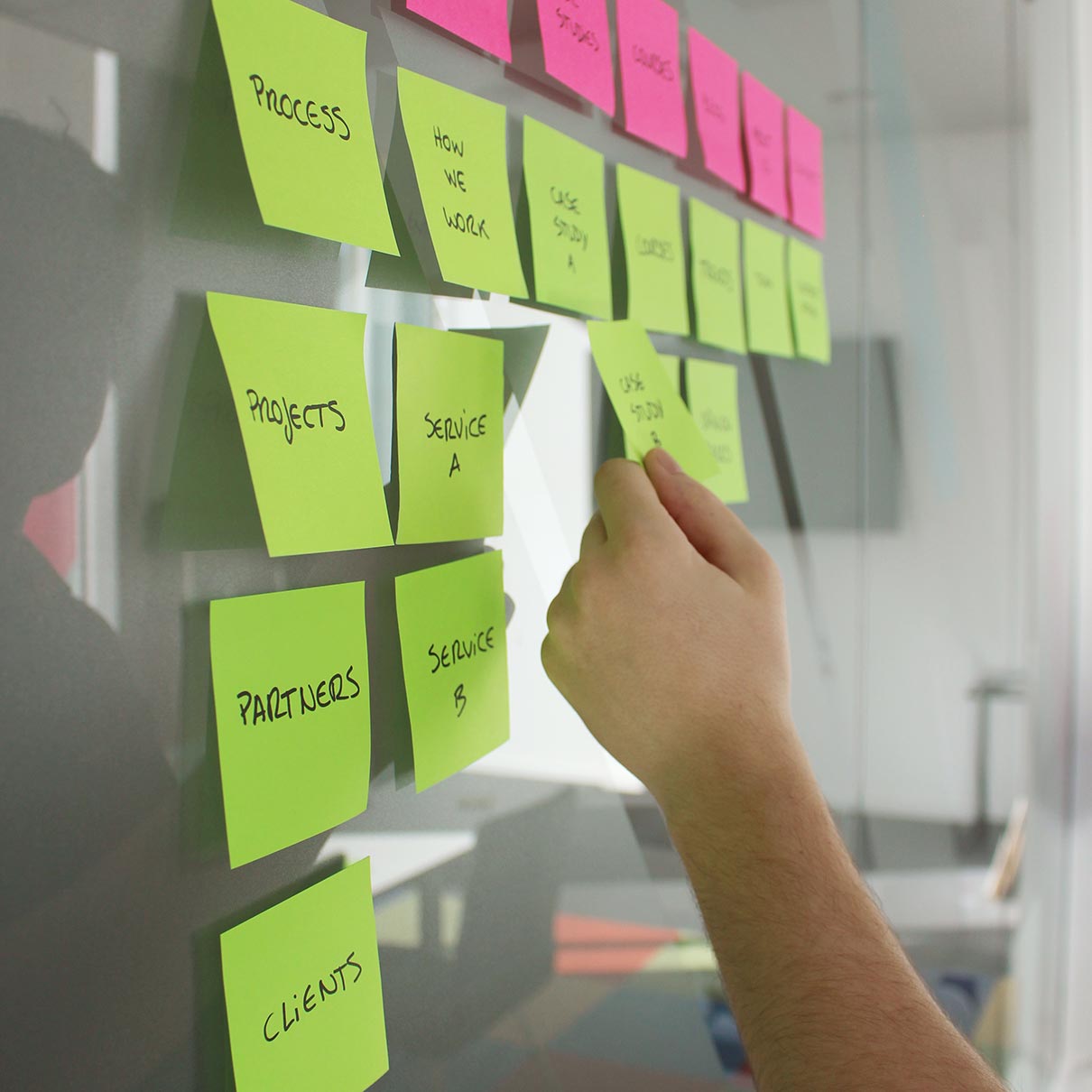Testing and validating ideas in a single week
A Design Sprint is a five-day process created by Google Venture designers which consists in helping organisations answering critical business questions through prototyping and user testing.
Running a development sprint is ideal for teams who don’t have much time to validate their project. In just five days it’s possible to meet both the team and their users needs, prototype and validate a solution, giving the team the confidence they need to move forward with the project. Validating ideas with real insights reduces the risk of failure and avoids a low return on investment.
What to expect from a design sprint?
- Quick and critical project learnings
- Rapid and functional prototype tested by real users
- Validated and customer-oriented ideas
- Groundbreaking and efficient products

Running the design sprint
DAY 1 · Understand
At the start of the day, the team focuses entirely in understanding and mapping the problem. In the afternoon, the main stakeholders are involved in the project and decide the problem to be solved.
DAY 2 · Diverge
The second day is exploratory, generating many ideas. In the afternoon, the team sketches them in greater detail, focusing on critical thinking. The recruitment profile for day 5 is defined.
DAY 3 · Decide
The team critiques the ideas sketched the day before and decides which one will be tested. In the afternoon, they make a detailed storyboard with all the interactions.
DAY 4 · Prototype
This day is dedicated to building a quick and semi-functional prototype. The usability tests of the next day are prepared and the interview script written.
Day 5 · Validate
The last day is completely dedicated to testing the prototype with 5 users. At the end of the day, in a debriefing, the iteration points are identified.
Advantages of running design sprints
-
Explore different solutions
In this fase there are no wrong answers. Through brainstorming and sketching the team explores different approaches to the problem. In the end, one or two are selected to be tested.
-
Rapid and functional prototypes
An interactive prototype for desktop, smartphone or tablet is created to validate the solution. It’s not supposed to be perfect, but functional and appear real to users.
-
Test the prototypes
The prototype is tested with 5 users, allowing the team to learn from their feedback. In the end, the results are discussed and the team will know what’s the best path to follow.
Not enough time to validate your project?
If you’re about to launch a new product or feature, Xperienz can help you run a design sprint. We’ll create an interactive prototype and validate your solution with users in our own research lab. In the end, we’ll discuss results and you’ll know how to move forward.
Tell me more
